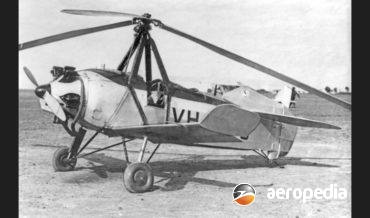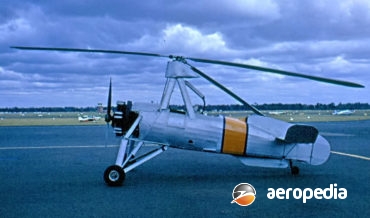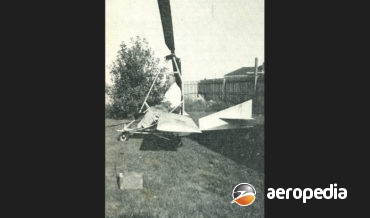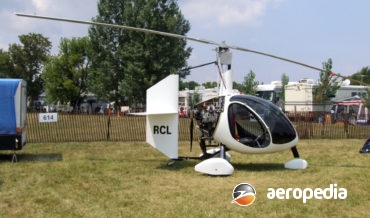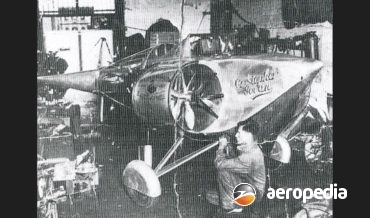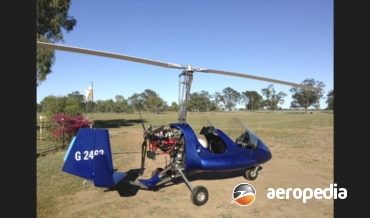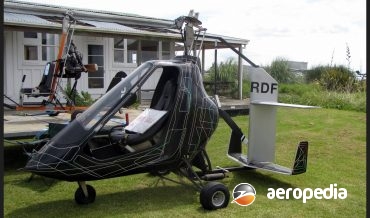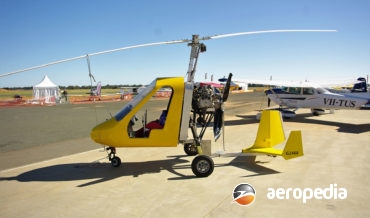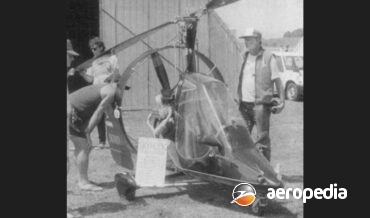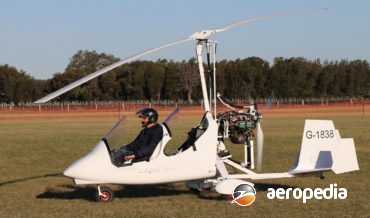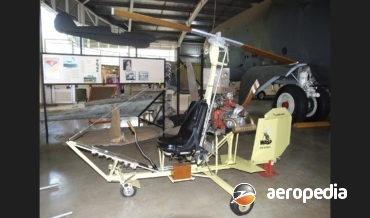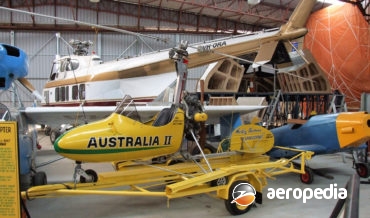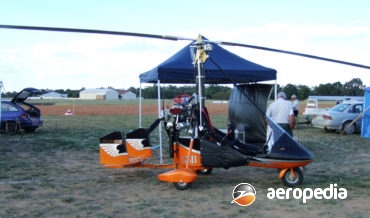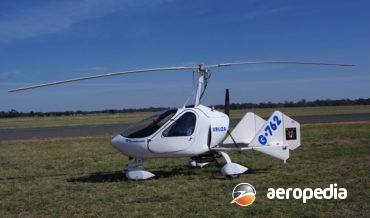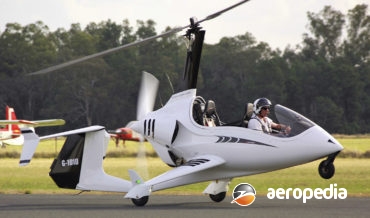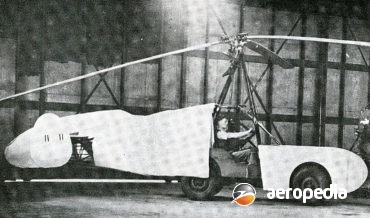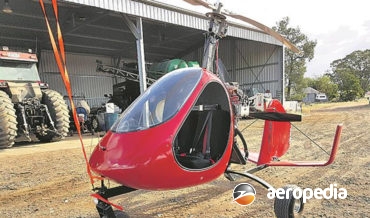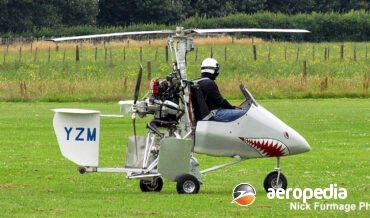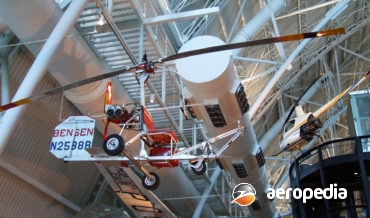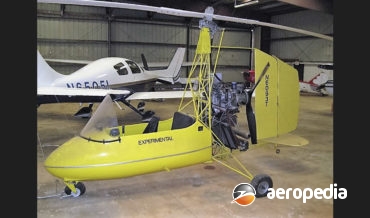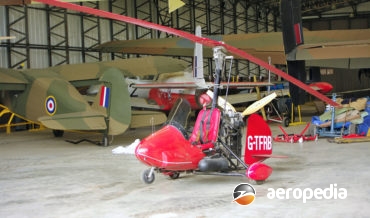All Contents
Contents
Don Juan de le Cierva, the Spanish inventor of the first practical rotating wing, worked for many years on the development of autogyros his work only ceasing with his tragic death in an air crash in 1936.
David C. Eyre
- May 17, 2019
Following upon the success of the C.19 series, development continued. In 1932 the Pitcairn Autogyro Company in the USA developed a satisfactory method of starting the rotor with a clutch and engine-drive mechanism, and this system was incorporated in the C-19 Mk IV.
David C. Eyre
- May 17, 2019
In the early 1960s Mr Leonard Williams designed and constructed a gyrocopter known by his friends as the Lennycopter.
David C. Eyre
- May 8, 2019
The Heli Thruster is a two-seat gyrocopter produced by Ultimate Flying Objects Inc in New Zealand in kit form for the amateur constructor.
David C. Eyre
- May 8, 2019
In 1933/34, following the announcement of the 1934 MacRobertson Air Race from England to Australia, there was great interest around the World and many persons and organisations set about entering suitable aircraft.
David C. Eyre
- May 8, 2019
The Titanium Explorer gyrocopter was designed by Neil Sheafer and built at Tamworth, NSW, he being previously the Australian importer for similar in appearance Autogyro Europe gyrocopters imported from overseas.
David C. Eyre
- May 8, 2019
The Falcon is a light gyrocopter produced in kit form in the United States and has been produced in two variants, the Falcon single-seater and the Falcon II two seater.
David C. Eyre
- May 8, 2019
The 2000 series of Gyrocopters has been produced by Rotary Air Force Marketing Inc of Kindersley, Saskatchewan, Canada, and has been produced in a number of models, including the 1000 FT single-seater, the 2000 STD-SE basic variant, the 2000 GTX and 2000 GTX SE, all fitted with the Subaru EA82
David C. Eyre
- May 8, 2019
The GyroBee was designed by Ralph Taggart of the Michigan State University and made available as free documentation to interested builders, and in due course was produced in kit form by Star Bee Gyro of Worcester, Massachusetts for amateur builders.
David C. Eyre
- May 8, 2019
Marketed by Sport Copter Inc of Scappoose, Oregon, the Vortex is one of a series of gyrocopters produced in three basic variants, the Sportscopter II, Vortex M-912 and the Lightning, the latter being a basic model.
David C. Eyre
- May 8, 2019
The Brako series of gyrocopters was designed by Enio Pagotto in and is manufactured at a facility in Italy by Pagotto Carpenterie sri at Pianzano.
David C. Eyre
- May 8, 2019
The Skyhook was a homebuilt gyrocopter designed and built by Ted Minty of Turramurra, NSW in the 1970s, the prototype flying for the first time on 1 January 1878.
David C. Eyre
- May 8, 2019
The M-16 series is one of a series of gyrocopters produced in Italy by Magni and is aimed at the training market for gyrocopters, the machine being longer and wider in the cockpit area, having a larger windscreen, an optional removable rear seat windscreen, a larger instrument panel, standard electric
David C. Eyre
- May 8, 2019
Photograph: Magni M-22 Voyager G-1838 at Cessnock, NSW in September 2018 (David C Eyre) Country of origin: Italy Description: Power Plant: (M-22): one 75 kw (100 hp) Rotax 912S four-cylinder horizontally-opposed liquid and air cooled engine. Specifications: Rotor diameter: 8.53 m (28 ft) Propeller diameter: 1,7 m (67 in) Overall
David C. Eyre
- May 8, 2019
Photograph: Magni M-24 Orion G-1818 (c/n 24127544) at Temora, NSW in March 2013 (David C Eyre) Country of origin: Italy Description: Two-seat sport gyrocopter Power Plant: (M-24): one 86 kw (115 hp) Rotax 914 turbocharged four-cylinder horizontally-opposed liquid-and-air cooled engine Specifications: Rotor diameter: 8.53 m (28 ft) Propeller diameter: 1.7
David C. Eyre
- May 8, 2019
The McCandless M-4 Gyroplane was a British single-seater ultra-light autogyro first flown in 1961 and was initially powered by a Triumph motor-cycle engine, this later being replaced by a Norton motor-cycle engine but this was also found not to be suitable for installation in such a machine and was abandoned
David C. Eyre
- May 8, 2019
Harley Newman was an avid gyrocopter operator for many years and developed a series of single-seat machines for sporting purposes.
David C. Eyre
- May 8, 2019
Developed by Martin Hollmann of Orlando, Florida, a senior design engineer in the aerospace industry, the HA-2M Sportster [also known as the Hollmann Sportster] was claimed to be the first two-seat gyroplane designed for the homebuilder who has access to a minimum of power tools.
David C. Eyre
- May 8, 2019
The Gyroz two-seat tandem gyrocopter was the culmination of the development of gyrocopters for sports pilots by Advanced Kinetics of Kurrajong, NSW.
David C. Eyre
- May 8, 2019
G T Gyroplanes of Moama, NSW was formed by Geoffrey and Alistair Morrison, who for many years had been involved in maintaining and re-building fixed wing aircraft and helicopters in the Central Otago area of New Zealand.
David C. Eyre
- May 8, 2019
The ArrowCopter is a two-seat high performance gyrocopter produced in Austria to United Kingdom construction standard Section T CAP 643 which permits its construction up to a MTOW of 600 kg (1,322 lb), and in the ultralight class in Germany and other countries, up to a max of 450 kg
David C. Eyre
- May 8, 2019
Development Technology Aero (DTA) later known as Delta Trikes Aviation) was founded in France in 1990 by Jean-Michel Dizier to produce a range of trikes and machines were developed to meet aerial work requirements, including agriculture, territorial tracking and pipeline work.
David C. Eyre
- May 8, 2019
Known as Project Skyward, work upon which commenced during World War II in March 1943, the DCA Fleep, as it was known, was a conversion of a Willys 4 x 4 ¼-ton Jeep to accept a gyrocopter head so it could be flown to battle areas
David C. Eyre
- May 8, 2019
The Firebird is one of a series of gyrocopters designed and built by Paul Bruty at his facility at Ballarat VIC. and is the culmination of much development to produce a cross-country gyroplane for amateur builders, and to provide it in kit form.
David C. Eyre
- May 8, 2019
The Butterfly series of gyrocopters marketed in kit form in the United States in a number of models, including the Emperor Butterfly, Monarch Butterfly, Golden Butterfly, Aurora Butterfly, Turbo Golden Butterfly, Ultralight Butterfly etc.
David C. Eyre
- May 8, 2019
The fore-runner of the popular gyrocopter, the Bensen series of machines was designed and developed in the mid 1950s by Dr Igor Benson, who had emigrated from Russia to the United States after World War II.
David C. Eyre
- May 8, 2019
The Barnett Rotorcraft Co of Olivehurst, California for some years has designed and built two generally-similar ultra-light gyroplanes known as the J-3M and J-4B and the basic difference between the two has been the engine installed, the J-3M being a utility model with a flat-side cabin with fabric covering and
David C. Eyre
- May 8, 2019
The Commander Elite is a two-seat gyrocopter produced by Air Command International of Caddo Mills, Texas and is one of a range of machines produced by this Company.
David C. Eyre
- May 8, 2019
Designed and developed by Aero-Sport International Ltd of Auckland, the prototype of the Kahu two-seat light sporting gyrocopter (ZK-RCP – c/n K1) has been under development since 2001, flying for the first time on 27 July 2001 and received a temporary flight permit certificate allowing for full testing on 24
David C. Eyre
- May 8, 2019
Recent Comments
Archives
Categories
- No categories
Categories
- No categories
Latest Posts
Newsletter

